If you’re new to the world of virtual reality, you may be wondering if you need glasses to enjoy it. You’re not alone and we’re here to answer all of your questions. Whether you wear glasses for longsightedness, shortsightedness, or another eye condition, this article will help you find out whether you need glasses for VR.
You will generally need to wear glasses while using a VR headset unless you only have a mild eye condition. If you can see clearly at a distance of 1.2-2m, then you can usually use a VR headset without glasses. Many VR headsets work comfortably with glasses, and most can be adjusted to improve comfort.
Let’s explore how people who wear glasses can enjoy a fantastic VR experience, and what the best options are to ensure great visual clarity and comfort. Let’s get started!
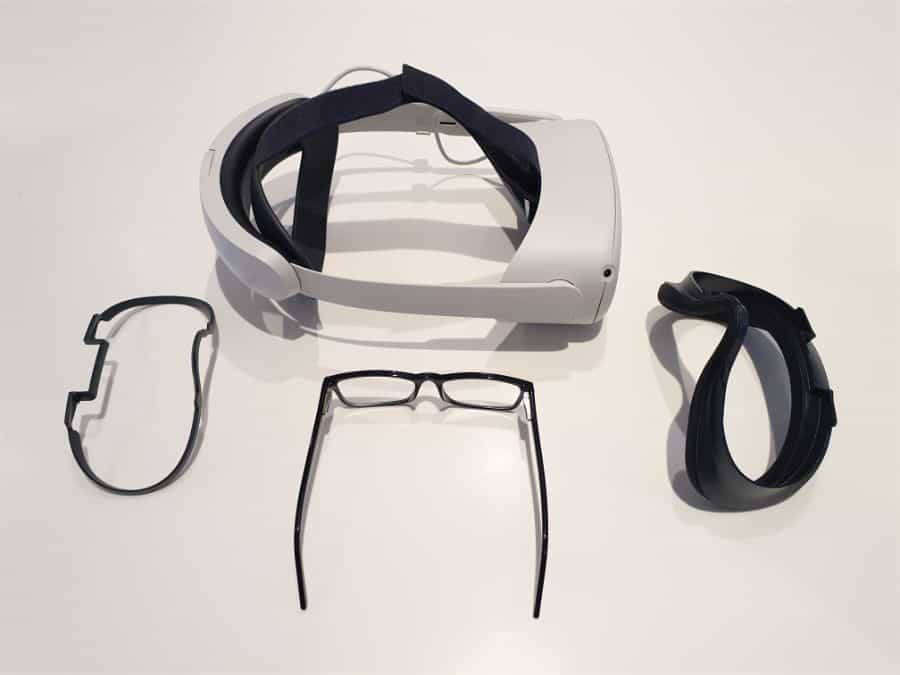
Do You Need Glasses for VR?
As a general rule, if you normally use glasses to carry out your daily activities you will need to wear glasses when using a VR headset. Your vision within VR will not differ from your real-life vision without glasses regardless of your level of vision.
Most VR headsets have lenses with a fixed focal distance of approximately 1.2-2m. If you can see clearly at a distance that matches the focal distance of your headset, then your vision will be clear. If not, you will need glasses to correct your vision.
Current VR headsets do not have lenses that are able to adjust their focus depending on what you are looking at in VR, so even people with good vision will experience some blurring of close-up objects, and to a lesser degree, very distant objects.
Many VR headsets provide sufficient room for glasses to fit into, and others can be adjusted in a number of ways to make them more comfortable for people wearing glasses. There are two important things to consider before using glasses with a VR headset:
- The comfort of using glasses with a VR headset.
- The clarity of the VR experience.
Both of these are crucially important and will have a major impact on your enjoyment of using a VR headset with glasses. I have significant astigmatism and long-sightedness and have been using a range of VR headsets with glasses for years. I’ve picked up some great tips to ensure you get excellent visual clarity, as well as a comfortable experience while using VR headsets with glasses. Let’s cover each of them in turn.
How To Improve Comfort When Wearing Glasses With A VR Headset
Most modern VR headsets accommodate people who wear glasses either as standard or by supplying a spacer device that can be fitted inside the headset to increase the amount of room between the lenses and your face, providing enough room for your glasses.
I’ve found comfort levels to be hit and miss with some headsets, but I’ve always been able to make a few adjustments to get my VR headsets feeling comfortable.
Position The VR Headset Over Your Eyes Before Adjusting The Head Strap
The best way to put your headset on to maximize comfort is to first position the headset over your face and glasses, ensuring that it is positioned comfortably before adjusting the head strap. This generally avoids your glasses being moved around or pressed into your face as you pull your headset down over your face.
Check That The Width Of Your Glasses Is Compatible With Your VR Headset
Not all glasses will fit every VR headset. Extremely wide or tall glasses will not fit in some VR headsets, particularly the most compact headsets. You should measure both the height and width of your frames and then check with the manufacturer of the VR headset you plan to get to ensure that they will fit.
For example, the Meta Quest 2 supports glasses frames up to 142mm wide and 50mm tall. Interestingly, my own glasses measure 141mm by 41mm and I have no issues using them with the Quest 2, although I do have to use the glasses spacer that comes included with the Quest 2 when you purchase it.
Adjust Your Glasses After Putting Your VR Headset On
After adjusting the head strap of my VR headset, I usually find that my glasses get pushed into my face a little, putting some additional pressure on my nose and cheeks. A good way to counter this is to use the arms of your glasses to gently push your glasses forward, off your face, after you have put your VR headset on. This generally leads to a much more comfortable experience, so you should be able to play in VR wearing glasses without any discomfort.
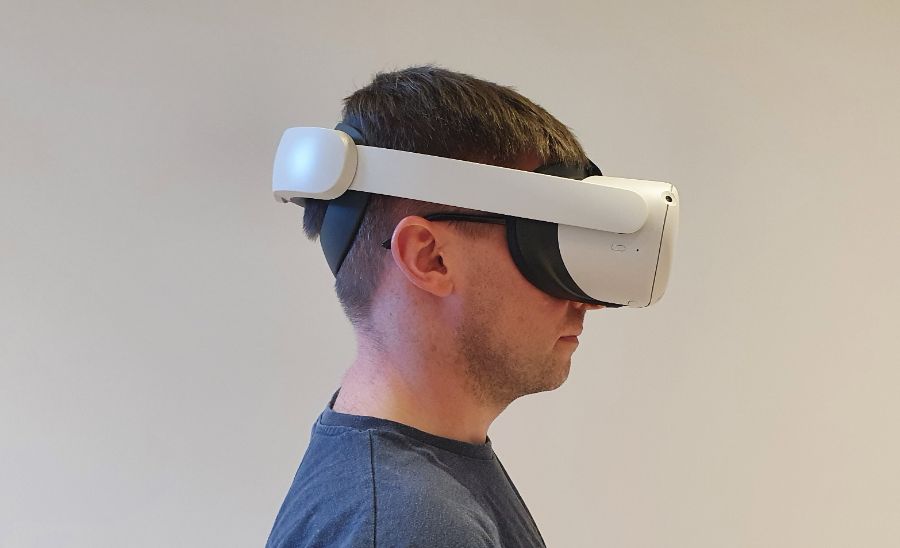
Make Sure The VR Headset Is Balanced And Well Fitting
If you are wearing glasses in VR, it is even more important than normal to ensure that your VR headset is well fitting and positioned correctly. I strongly recommend that you take the time to adjust the straps and positioning of your headset before you play, as a poorly balanced or fitting headset will soon start to press into your glasses, putting pressure on your face and causing discomfort.
Buy A New Spacer Or Face Gasket To Provide More Space
It is possible to buy after-market spacers, facial interfaces, and head straps that provide more comfort and space for your glasses when wearing your VR headset. VR Cover is a good place to look for accessories to make your experience of wearing your VR headset with glasses more comfortable.
Consider Buying Prescription VR Lenses
If you can’t seem to make your experience as comfortable as you would like, you could consider buying prescription lens inserts for your VR headset. There are a number of companies that can make prescription lens inserts for many of the popular VR headsets.
For most headsets, these prescription lenses attach to the front of the lenses in the VR headset, enabling you to achieve crystal clear vision in VR without wearing glasses.
How To Improve Visual Clarity When Using Glasses With A VR Headset
Use A Glasses Spacer For Your VR Headset
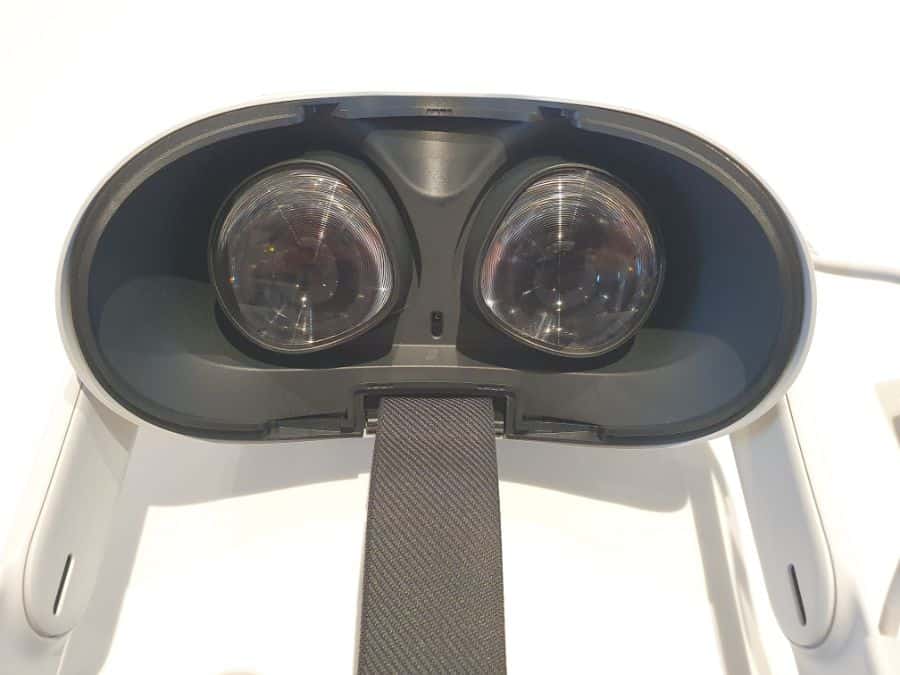
Glasses spacers slightly reduce the FOV you will achieve with a given VR headset, and as a result, many glasses users are reluctant to use one unless it is absolutely necessary. However, I strongly recommend you try using one.
Although the FOV will be a little lower, you will notice that it is much easier to position your eyes in front of the sweet spot where visual clarity is best, and the proportion of your vision that has good visual clarity will be higher.
Don’t Fit Your VR Headset Too Tight
A tight-fitting VR headset without light leak is often desirable, but the lack of airflow quickly leads to lens fog, making your vision blurry. Wearing glasses makes this twice as bad, as it’s harder and more time-consuming to clear the condensation.
VR headsets that have greater light leak, such as the Quest 2, or fitting your headset a little looser increases airflow, reduces fogging, and will greatly improve the visual clarity and enjoyment of your experience.
Take Care To Avoid Lens Scratching
Most VR headset lenses are made of plastic and are easy to scratch. It is important to ensure that your glasses are not touching or rubbing up against the lenses during play sessions, as this can lead to scratches on the lenses over time, which will degrade the visual clarity of your headset.
Use a glasses spacer, or a thicker facial interface, or loosen the head straps to ensure your glasses have a little clearance from the lenses at all times.
Do Short-Sighted People Need To Wear Glasses In VR?
People with short-sightedness tend to be able to focus on close-up objects, but things become increasingly blurry as the distance from your eyes increases. If you have a mild prescription of up to -2.00, you may see quite clearly at a distance of 1.2-2m and be able to use VR headsets without glasses.
If your prescription is stronger than this, it is highly likely that you will need to wear glasses to use a VR headset.
Do Long-Sighted People Need To Wear Glasses In VR?
You are much more likely to be able to use a VR headset without glasses if you are long-sighted. Most long-sighted people struggle to focus on objects that are very close to their eyes but can often see clearly at a distance of 1.2-2m, which is sufficient for VR. If you are long-sighted, you can test to see if you can see things clearly at 1.2-2m, depending on the VR headset you are planning to purchase, to see whether you will need glasses for VR.
Do People With Astigmatism Need Glasses For VR?
Whether you need to wear glasses for VR with astigmatism will depend entirely on the severity of your condition. Astigmatism is caused by irregularities in the curvature of your eyes and can cause blurring at all distances, as well as glare looking at bright lights.
As someone who suffers from astigmatism, I normally say that it makes everything a little fuzzy, regardless of distance. If you normally wear glasses for day-to-day life, you will definitely want to use glasses for VR.
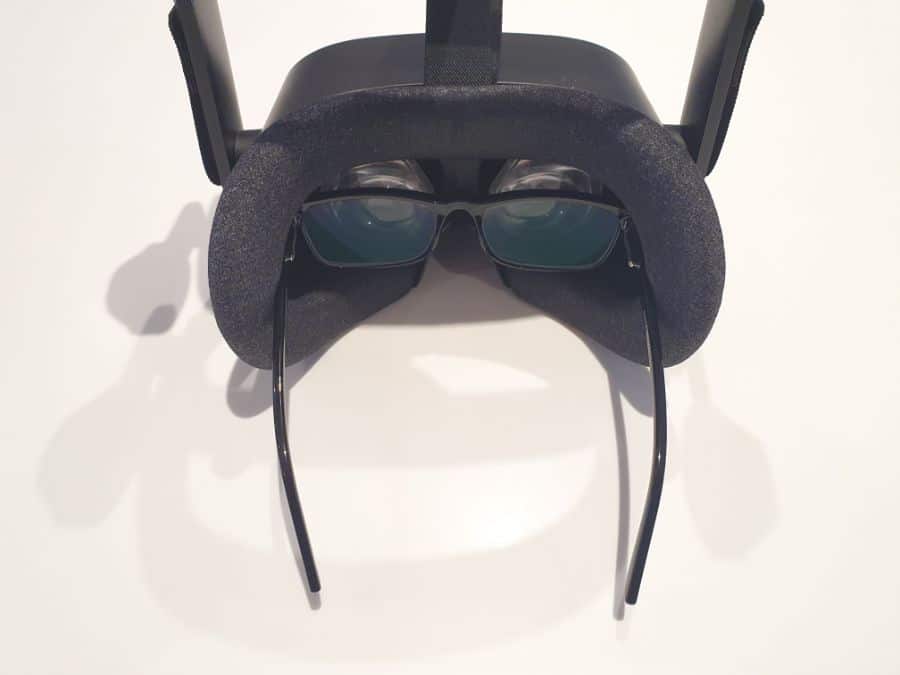
How To Use VR Without Glasses?
Even if you’re eyesight isn’t great, there are other options for enjoying VR without glasses. Many people prefer to use contact lenses, or you could consider getting prescription lens inserts for your VR headset. Of course, you could also speak to your optometrist about other options for improving your vision that doesn’t involve glasses.
Can You Get Prescription Lenses For VR Headsets?
Several companies produce prescription lenses that can be used to negate the need for glasses when using a VR headset. Most lenses attach to the front of the lenses in the VR headset, rather than replacing the entire lenses that come with the device.
VR Optician and Hons VR are two of the largest suppliers of custom prescription lenses for VR headsets. I haven’t gone as far as getting prescription lens inserts for any of my VR headsets as I’m generally happy using glasses, but I have heard plenty of good feedback from others who have used both these companies.
Do VR Prescription Lenses Fog Up?
VR prescription lenses will fog up in the same way that VR headset lenses fog up, particularly when you use them in a warm environment after they sit at room temperature for a long time. There are several factors that cause VR lenses to fog up more easily, but there are a number of things you can do to minimize fogging.
Will Glasses Scratch VR Headset Lenses?
The lenses of virtual reality headsets are normally made of plastic, which is much softer and more prone to damage than lenses that are made of glass. When using glasses in VR, they can easily come in contact with the lenses resulting in scratches or other damage.
However, if you take reasonable precautions to prevent your glasses from coming into contact with the lenses of your VR headset, then you should have no issues. I have been using glasses with VR headsets for many years now and I can only think of one occasion that I got a scratch on a lens that was caused by my glasses.
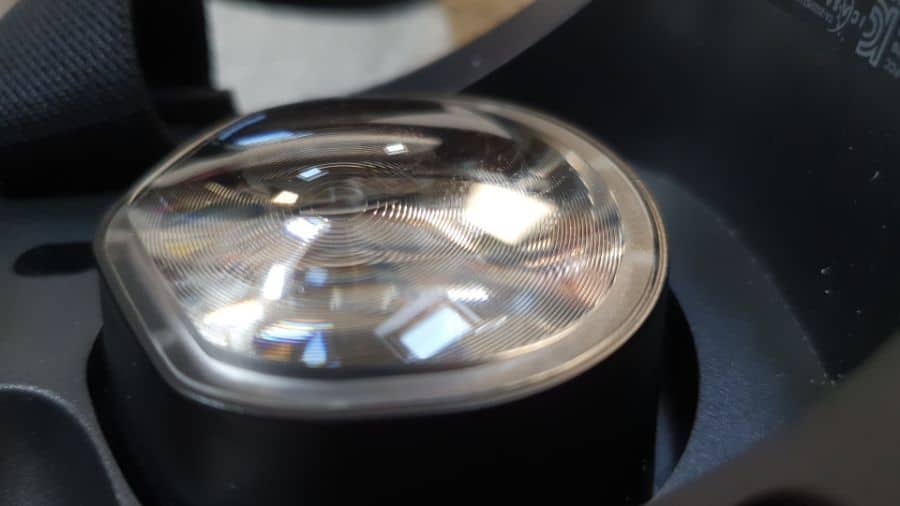
What VR Headset Is Best For People With Glasses?
I have used quite a number of VR headsets with glasses, and I’ve generally been able to achieve a comfortable fit. Sometimes this has required me to fit a glasses spacer or change the facial interface, but I’ve always managed to get there. As a result, comfort with glasses should probably take a back seat to the other features when you’re choosing a VR headset.
With that said, I’ve found the Valve Index and HP Reverb G2 to be exceptionally comfortable when wearing glasses, whereas it took a little more effort to get a comfortable fit when using the Meta Quest 2. With that said, the Quest 2 is currently the VR headset that I use the most, and due to the glasses spacer and a new facial interface, it stays comfortable for hours at a time.
Can You Use Glasses With Oculus Quest 2?
As with each Oculus model, the Oculus Quest 2 (now Meta Quest 2) can be used with most glasses. While that’s true, bigger glasses may not fit within the headset. Glasses frames should have a width of 142mm or less and a height of 50mm or less.
A glasses spacer is required for the Oculus Quest 2 to provide enough room for your glasses. The spacer is very easy to insert and comes with the device.
Can You Use VR with One Eye?
Yes, you can use VR with one eye. However, it has a minor effect on the VR experience. A typical VR headset renders separate images from a different angle to each eye, creating a stereoscopic 3D image. If you are using a VR headset with only one eye, you lose this stereoscopic effect, and it is harder to perceive depth.
You will also have a smaller FOV, as you will lose the portion of the rendered image that would be delivered to the other eye. You will have to compensate by turning your head the same way you would in real life.
Final Thoughts
While there are alternatives to glasses such as prescription lenses and contact lenses, many people will need to have their vision corrected before they can enjoy VR. This is especially true of those who are near-sighted. With so many VR sets made to fit comfortably with glasses, you’ll still be able to immerse yourself in the wonderful world of virtual reality.
